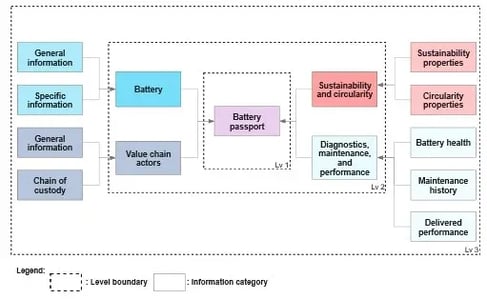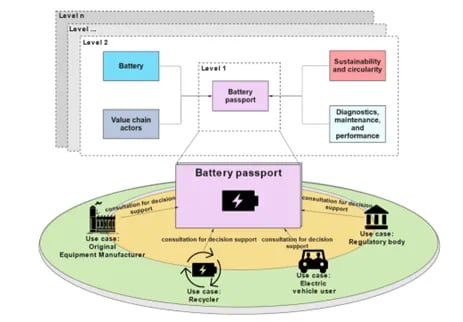The industry driven debate on digital battery passports as enablers of a circular economy has gained increased momentum. To bring a sustainability research guided perspective to the table, the Christian-Doppler-Laboratory for Sustainable Product Management at the University of Graz, Austria, spotlighted the information needs and requirements that digital battery passports have to fulfil in a recent paper. Learn more in this blog post.
By Katharina Berger, Josef-Peter Schöggl and Rupert J. Baumgartner
Digital product passports: from an idea to soon-to-be reality
Digital product passports as enablers of a circular economy have been mentioned in policymaker action plans, such as the Green Deal and Circular Economy Action plan by the European Commission, for quite some time. Recently, this idea has become more tangible as policymakers are putting forward legislation to make digital product passport implementation happen. For example, in 2020 the European Commission presented its proposal for a new directive on batteries and waste batteries, explicitly demanding the implementation of such technology from 2026 onwards. In March 2022, the proposal of the Sustainable Products Initiative was published, calling for the implementation of a digital product passport for product groups yet to be defined. Even though the European Commission has outlined some minimum data requirements that digital product passports have to fulfil (e.g., provision of master data), the question remains:
“What data is truly needed to allow digital product passports to enable a circular economy?”
This question was addressed by a recent paper by the Christian-Doppler-Laboratory for Sustainable Product Management at the University of Graz, co-funded by iPoint-systems and AVL List GmbH. Focus was placed on the electric vehicle battery value chain, culminating in the provision of a first systematic delineation of the informational needs of potential digital battery passport users in the electric vehicle battery value chain.
Digital battery passports: concept and use cases
In the paper a concept for a digital battery passport is presented, entailing four main information categories with a total of 54 data points which are of interest to support battery value chain stakeholders in their sustainable battery management decision situations (see Figure 1). The concept development was driven by a systematic literature research, as well as a preliminary stakeholder validation (see the paper link for a more detailed method description).

Figure 1: Overview digital battery passport concept (Source: Katharina Berger, Josef-Peter Schöggl and Rupert J. Baumgartner, 2022)
The need of the identified data points is further illustrated by four use cases concerning distinct battery value chain stakeholders (see Figure 2):
- The OEM: use case “value chain development”
This use case entails the identification of sustainability hot spots along the value chain, enabling the OEM to take up measures to counter said hot spots, and minimize negative environmental and social impacts throughout the product life cycle. - The EV(B) user: use case “the best EV(B)”
As sustainability related issues becoming more important to customers, and batteries are often linked to such issues (e.g., due to them containing critical raw materials, such as cobalt), this use case concerns a consumer who wants to buy a vehicle which contains a battery with a decent environmental and social sustainability performance. - The recycler: use case “support of recycling efforts”
As the ramp up of recycling capacities is to be expected to be able to deal with the volumes of spent batteries, recycler may derive utility from a digital battery passport if it were able to support their recycling processes (e.g., by provision of disassembly instruction, information about battery chemistries, etc.). - The regulator body: use case “facilitating sustainable product management efforts”
As regulatory bodies are interested in enabling the transition towards sustainable development, the introduction of respective regulatory frameworks is required. In this use case, regulatory bodies may derive useful information which enables them to introduce new legislation, as well as adapt existing ones for this purpose.

Figure 2: Selection of use cases of a digital battery passport (Source: Katharina Berger, Josef-Peter Schöggl and Rupert J. Baumgartner, 2022)
What’s next?
Due to existing data gaps along the battery value chain, stakeholders are currently facing the challenge to get the hold over needed data. Next to further deepen the understanding of DBP users’ data needs and requirements, an understanding of stakeholders’ willingness to share needed data is of interest, as data sharing is key to enable DBPs to truly facilitate the transition to more sustainable and circular battery value chains.
The full paper can be read with open access here: https://doi.org/10.1016/j.jclepro.2022.131492





